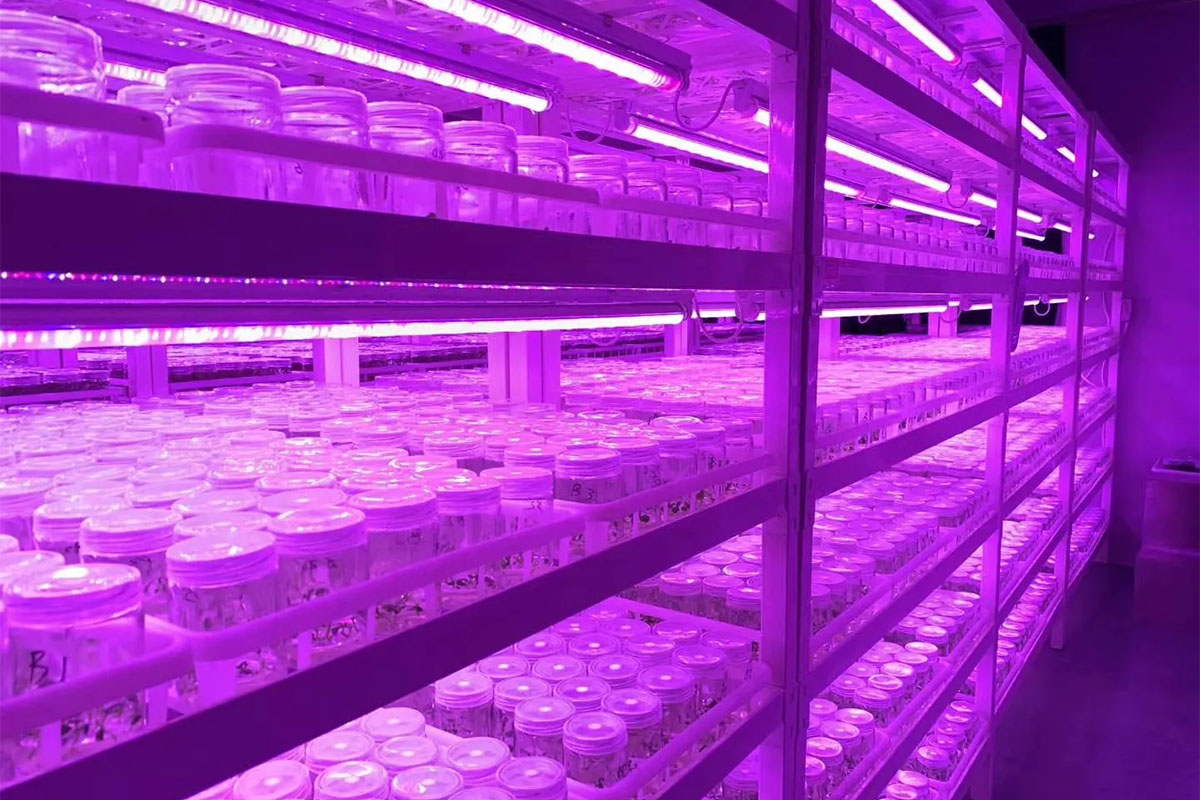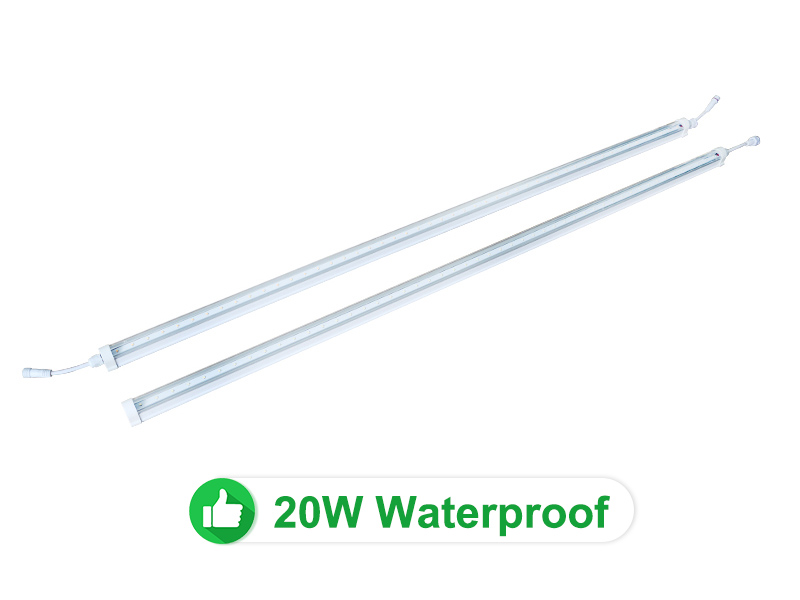
The Right Light For The Right Plant
Light is a key factor in plant tissue culture. With 10 years of experience of working closely with horticultural partners around the world, VANQ offers a wide range of lighting solutions tailored to meet the unique needs of every tissue culture producer. With LED tissue culture light, the spectral output of grow light can be tuned, which makes it possible to apply the optimum “light recipe” for different kinds of crops.
LED lighting also produces an extremely uniform light distribution. This means that all cuttings, whether at the edge of the shelf or the center, receive the same light, and all cuttings grow at the same rate and to the same shape. In addition, LED lighting uses very little electrical energy compared to fluorescent (TL) systems – up to 60% less. And because it produces hardly any heat, the lamps can be placed very close to the plants, reducing the shelf-light height, which means that more growing layers can be stacked in the same space. Moreover, LED’s high reliability means less repairing and no breakage concerns.
Benefits of LED for tissue culture at a glance:
Proven light recipes for different crops
Energy saving
Better quality and higher survival rate in rooting
Improved propagation process
Speeding-up of hardening phase
Shorter total growth cycle

GLT8 is the ideal LED grow light for replacement of traditional fluorescent grow light tube in horticulture applications, such as tissue culture, seedling.
Customizable spectrum for various growing applications.
High PPF and Efficacy: 54 μmol/s, 2.7μmol/J
1.2m/4ft-20W
Daisy chain function
How to Choose The Right LED Lighting in Plant Tissue Culture?
The application of LED lighting in plant tissue culture is based on the development of LED lighting technology and the regulation of plant tissue culture environment. At present, the application of LED lighting in plant tissue culture mainly focuses on the effects of light spectrum, light intensity, and photoperiod on the growth of tissue cultured seedlings.
Light Spectrum
The spectrum is an important factor in determining whether the tissue culture plant can perform the expected growth response as planned. At the beginning of the birth of LED lighting, people used 660 nm red LED as the main light source and fluorescent lamp as the auxiliary light source for research. With the continuous development of LED technology, LEDs of various bands have been used for plant tissue culture, mainly 660 nm Left and right red light, blue light around 460 nm, far red and white light around 730 nm.
Relevant studies have shown that using LED as the light source of orchid tissue culture seedlings, red light can promote the growth of Cymbidium test-tube seedling leaves, but will reduce the chlorophyll content, but this phenomenon can be offset by blue light. The best red light for test-tube seedling growth The blue light ratio is 8:2. When the ratio of red to blue light is 3:1, the growth effect of callus is the best, but 100% red light has the highest induction rate of callus. In the tissue culture of grapes, it is found that the blue light component in the spectrum prevents the elongation of the test tube plantlets, but can promote the formation of leaves and the synthesis of various photosynthetic pigments.
The increase or decrease of the far-red light component PPF also has a significant effect on the accumulation of dry and fresh weight and the synthesis of photosynthetic pigments. Red LED helps increase plant height, internode length and rooting rate, while blue light is related to chlorophyll synthesis and stomata development. Although the chlorophyll content is lower under red LED conditions, this effect can be weakened by irradiating blue LEDs or fluorescent lamps. In addition, red light is conducive to the accumulation of soluble sugar and starch, and reduces pigment content. Blue light can reverse this effect and promote the synthesis of pigments and soluble proteins. The soluble sugar and starch content and root activity of the leaves treated with the combination of red light and blue light were higher than those treated with white light. In particular, the tissue culture seedlings treated with high R/B ratio light grew robust and had the highest survival rate after transplantation.
Studies have shown that the growth of chrysanthemum tissue culture seedlings is the best when the ratio of red to blue light is 7:3. The LED light source with a larger proportion of red light has better influence on Cymbidium and Phalaenopsis test-tube seedlings than the LED light source with a larger proportion of blue light. However, the test-tube seedling plants are shorter and grow worse in full red light and full blue light. In general, red light is beneficial to the elongation of plant stems and leaves and promotes morphogenesis, while blue light is beneficial to promote the development and growth of plant roots. In tissue culture of different plants, it is necessary to tailor the spectrum with the most suitable ratio of red to blue.
Light Intensity
For plants, light intensity is the photosynthetic quantum flux density (PPFD, μmol/(m2·s)), which is one of the most important parameters affecting plant photosynthesis. For most common tissue culture plants, 100 μmol/(m2·s) can already meet the growth requirements of tissue culture. In the strawberry tissue culture experiment, it was found that when the PPF was 60μmol/(m2·s), the growth of the tissue cultured seedlings was the best; when the Taro tissue culture seedlings were 60~70μmol/(m2·s), the aboveground part And the underground part has a higher fresh weight. Tissue cultured grape seedlings were cultured with LED lights, and it was found that the total PPF value suitable for the growth of grape tissue cultured seedlings was 40~55μmol/(m2·s). The research on chrysanthemum proved that the plant height, leaf number, root number, longest root length, dry weight and other main growth indicators of tissue cultured seedlings were significantly higher than the control when the light intensity was 60μmol/(m2·s).
Photoperiod
The photoperiod is also important for the growth of plant tissue culture. In the tissue culture experiment of gentian, the most suitable LED light environment for gentian out of the bottle is 50% blue light, PPF is 120μmol/(m2·s), and the photoperiod is 16 h. At the same time, for most plants, long-term irradiation with low PPF is better than long-term irradiation with high PPF.























